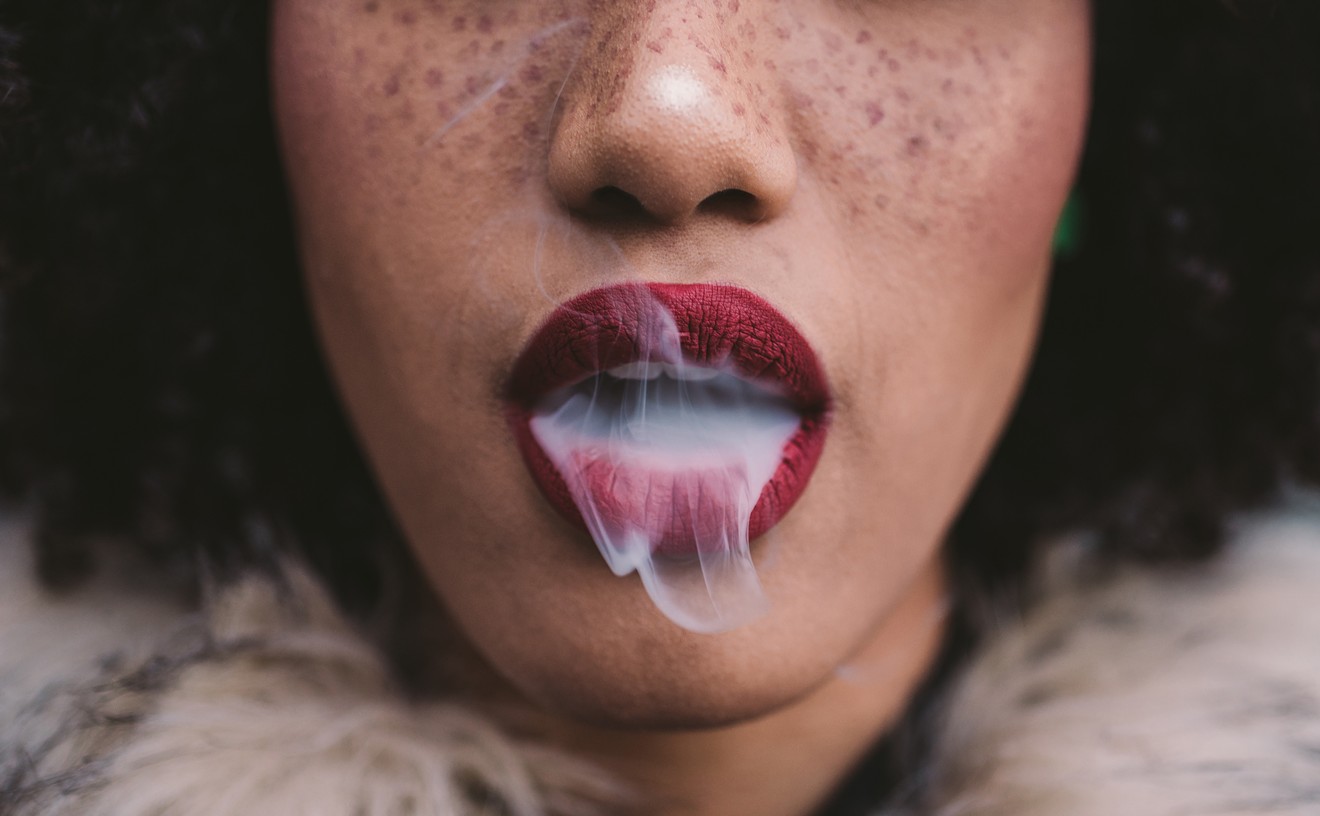Intimacy, perception of space and self-esteem are obvious things affected by being born blind. But how would the lifelong absence of images affect your brain’s ability to conjure dreams? Would your subconscious be able to project images?
This is the question that brought 29-year-old French photographer Jerome Poulalier across the Atlantic. Poulalier began his investigation by documenting the everyday lives of more than 30 individuals from the Dallas Lighthouse for the Blind. His subjects range from ages 14 to 81 and are either completely blind or have extremely low vision.
The Dallas Lighthouse for the Blind is a life-skills training center and manufacturing facility where blind and visually impaired persons are hired for jobs such as sewing neon vests. The nonprofit hired Poulalier to create a work of art that showcases how their programs improve the quality of life for those to whom they offer assistance.
“This year, we are celebrating our 85th anniversary,” says Laura Klein, executive vice president of the Dallas Lighthouse for the Blind. “When Jerome contacted the Dallas Lighthouse, I could not think of a better way to tell the North Texas community about the amazing things that the blind and visually impaired can do. For 85 years, the Dallas Lighthouse and the blind have been relatively silent in the community. With Jerome's help, we are able to tell the community about ‘being blind’ and bring light to a world of darkness by telling a story of hope and inspiration."
For his project, titled Being Blind, Poulalier spent nearly two months with members of the Lighthouse network. He participated in everyday activities such as yoga, swimming and dining out to understand how being born blind or becoming blind are both entirely different experiences than life with vision.
“As a photographer, I was always interested in how blind people can live without the tool that I use everyday,” he says. “I use my eyes to see and to capture moments, and I just wanted to understand how they live out their passions and face daily life challenges. I tried to meet as many people as possible. I met Zach who is 14 years old and I met John on the opposite end who is 81. It’s very interesting because Zach is young so his experiences are different. He doesn’t have the same things to tell compared to John.”
However, there were a few common threads among all of his interviewees. “They’re all motivated and they’re happy,” he says. “They don’t feel like victims.”
One of the more complex things Poulalier says he wished to learn was how blind people experience dreams. “If you have never seen any image, how can you have images in your brain?” he asks. “The answer to this question is that if you’re born blind then you cannot have any images in your brain because your eyes have never seen anything. Dreams are only noises and feelings and voices. If you became blind, you can still see when you’re dreaming. It’s really frustrating for these people because they can only see when they are asleep and when they wake up they can’t see anymore.”
While conducting research for his project, Poulalier also learned that frustrations like these have little effect on the daily life of a visually impaired person. "They can do almost everything that seeing people can do, except drive,” Poulalier says. “I actually met a guy who likes skydiving.”
One of the individuals Poulalier photographed, Dallas Lighthouse communications manager Blake Lindsay, says many people with sight impairment are on a lifetime mission to inform the public that they truly live their lives to the fullest. “We embrace work, recreation, stocking up on groceries and so much more,” Lindsay says. “We want the public to understand what all we can do, instead of unintentionally focusing on what people with blindness can’t do. These stories and photos will educate the masses.”
Poulalier hopes that Being Blind will also help sighted people realize that life is more about feeling than seeing. Through activities such as travel and playing music,blind people experience the same life that seeing people do but in a much deeper way, he believes.
“Everyone I interviewed said they did things since they were blind that they never thought about doing when they were sighted, like starting a barbecue sauce business, reading books and playing music,” Poulalier says. “One guy told me that when he’s in the grocery store or anywhere else, people see him as blind. But when he plays music, people don’t care if he’s blind or not because they just feel what he’s giving in a different way. Another guy told me he felt the same way when he plays the keyboard at church.”
Poulalier’s photo project will be presented at on open house for Dallas Lighthouse for the Blind (4306 Capitol Ave.) from 4 to 9 p.m. Tuesday, September 27. The event is free and open to the public. For more information, visit dallaslighthouse.org or jeromepoulalier.com.
[
{
"name": "Air - MediumRectangle - Inline Content - Mobile Display Size",
"component": "18855504",
"insertPoint": "2",
"requiredCountToDisplay": "2"
},{
"name": "Editor Picks",
"component": "17105533",
"insertPoint": "4",
"requiredCountToDisplay": "1"
},{
"name": "Inline Links",
"component": "18349797",
"insertPoint": "8th",
"startingPoint": 8,
"requiredCountToDisplay": "7",
"maxInsertions": 25
},{
"name": "Air - MediumRectangle - Combo - Inline Content",
"component": "17105532",
"insertPoint": "8th",
"startingPoint": 8,
"requiredCountToDisplay": "7",
"maxInsertions": 25
},{
"name": "Inline Links",
"component": "18349797",
"insertPoint": "8th",
"startingPoint": 12,
"requiredCountToDisplay": "11",
"maxInsertions": 25
},{
"name": "Air - Leaderboard Tower - Combo - Inline Content",
"component": "17105535",
"insertPoint": "8th",
"startingPoint": 12,
"requiredCountToDisplay": "11",
"maxInsertions": 25
}
]










